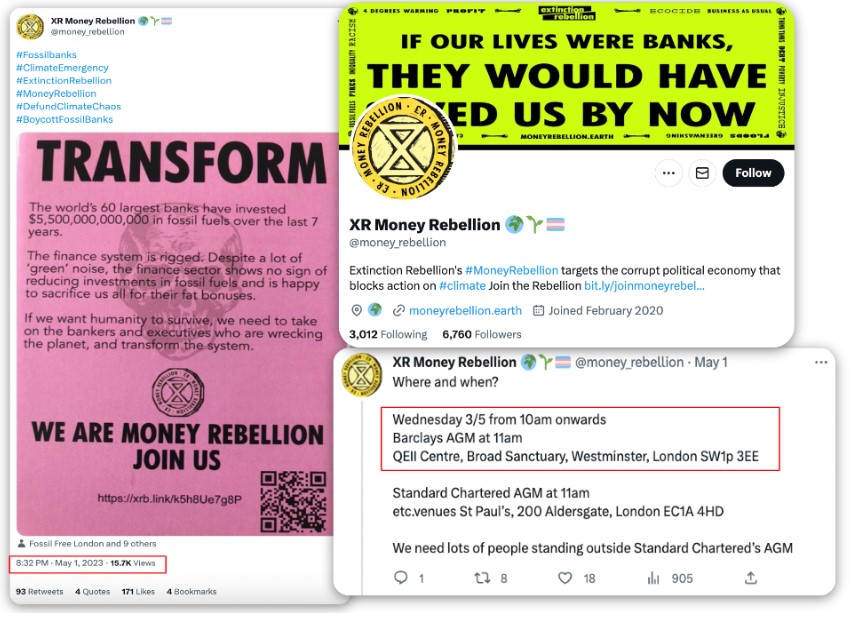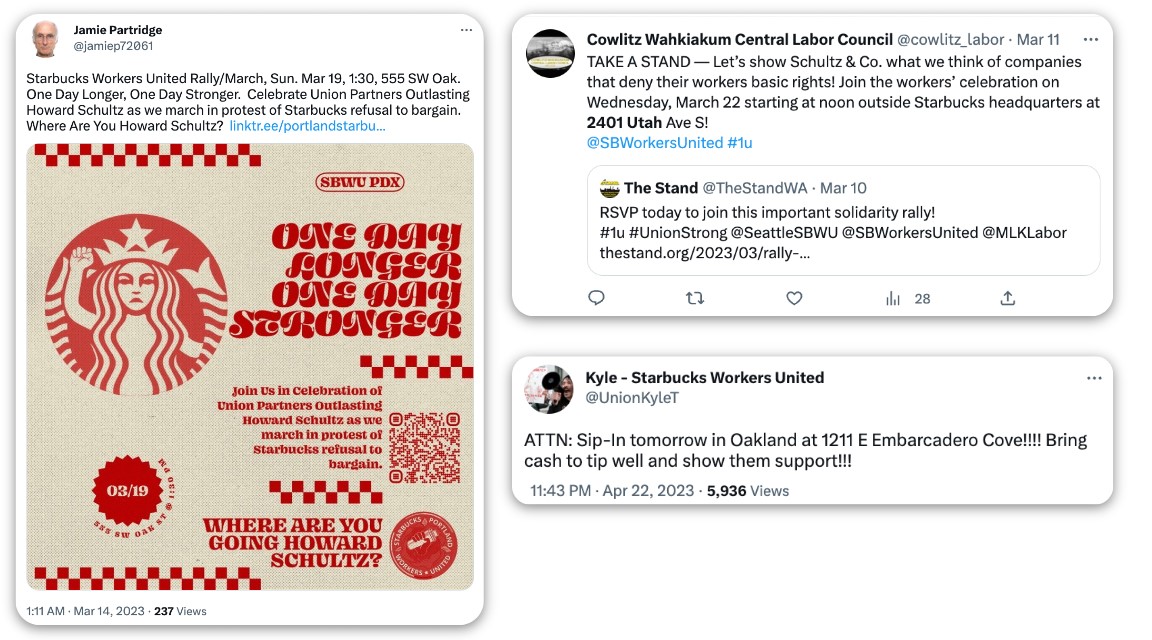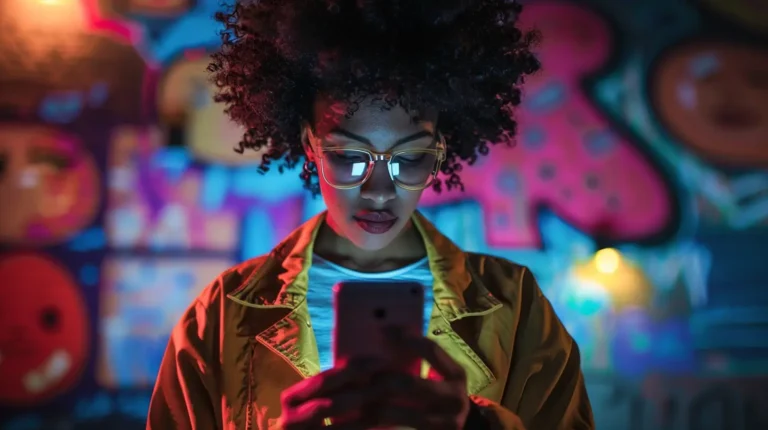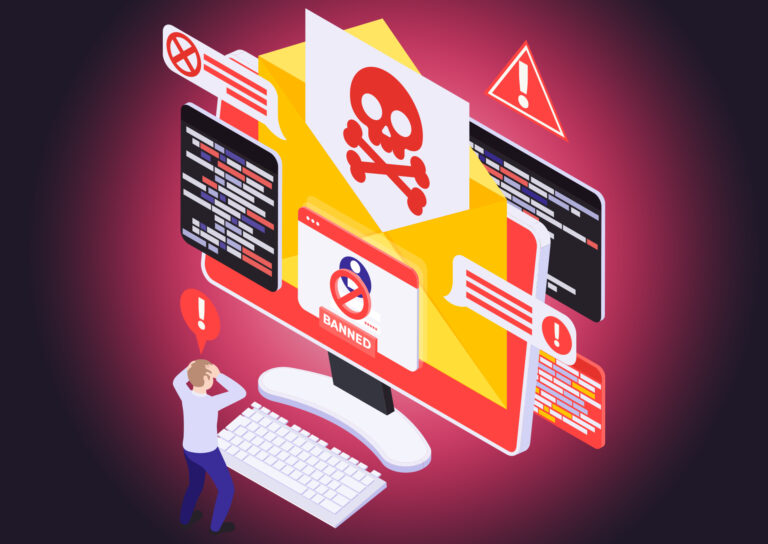Any company, especially large corporations, needs to be aware of negative online conversations. This is especially true when these conversations manifest in the physical world as rallies or gatherings. A company must know when and where these events occur.
A large company usually has a very clear distinction between teams handling social media – tracking, monitoring, and responding (Marketing and PR teams) and teams handling a company’s safety and security (Threat Intel or Corporate Security teams, CISOs, etc).
However, protests that start online and transform into real-world rallies and demonstrations are where those teams should come together – which unfortunately proves a blind spot for many of them.
Live Rallies, Like All Other Things, Start on Social
When a protest stays in the digital realm, it is a brand reputation issue: enraged, disappointed customers calling for boycotts can cause great damage to companies. However, when an online movement turns into a live demonstration or rally, it becomes an Event and Venue Risk issue: angry crowds gathering near your business, your offices, your stores. At the best case scenario, they draw unwanted negative attention. At the worst, they can do much more: stop customers from walking into your stores, cause damage to your property, or even threaten your employees.
Even a peaceful, quiet negative gathering is something a company should be aware of, and possibly watch out for. In recent years, major companies have been harmed by boycotts and protests that started on social media: Budlight, Amazon, Pepsi, Nestle, Facebook, Airbnb, Nike, and many others. Of course, most of these online boycotts did not transform into a physical-world threat. But what happens when they do?
Barclays’ Annual Event Under Siege
Multi-national bank Barclays holds an annual meeting for shareholders, with hundreds to thousands of participants. The meeting is also streamed live. Naturally, such high-profile events gain notice on social media. Cyabra discovered a Twitter profile named @money_rebellion, conducting what it defines as an “Extinction Rebellion Campaign” to expose banks as the primary cause of the climate crisis, mostly in relation to their funding of fossil fuels. Two days before the annual Barclays meeting, the profile shared its location and time, encouraging people to join a demonstration that would occur right in front of the meeting’s venue. The trending tweets reached the eyes of thousands of people and were reposted by many other profiles. The demonstration that followed was covered by Sky News, Daily Mail, The Guardian and other news channels.

Was Barclay aware of those early signs of a brewing protest? The Marketing team might have been monitoring this protest online, but this is where the threat and risk teams, protecting the company’s assets and people, should have come into effect. Thousands or even hundreds of people gathering in front of a company’s event or venue need to be addressed, not only by a PR or crisis management person present on location, but more importantly, by taking proper precautions and making sure security measures are in effect. Nobody wants their employees, executives, investors, or customers to find themselves having to navigate through an assembled, disapproving crowd. Worse, if even a single extremist were to infiltrate such a protest, they could potentially cause damage to public or private property and even inflict harm on individuals. This is why threat team should start seeing social media as part of their work, and give weight to threats emerging from the online sphere.
A Startling Starbucks Strike
Last March, a workers’ rights protest started trending on Twitter, following allegations that Starbucks was preventing workers from unionizing. Current and former employees have been spreading negative posts about the coffee empire and sharing stories, but none of them have called for violence against the company or its executives – yet.
Along with the negative content, Cyabra discovered that 231 profiles used hashtags like #StarbucksUnion and #StarbucksStrike, resulting in those posts reaching the eyes of over 9,000,000 people.
This was the moment in which the protest manifested in the real world: a few days prior to the company’s annual shareholders meeting, a huge demonstration was being planned and discussed. The profiles promoting it were also participating in related discussions in order to spread the word. Some of the posts started threatening Starbucks CEO, Howard Schultz, making Starbucks face an executive security threat on top of the venue risk and reputational damage issues.


On the day of the rally, Starbucks workers at over 100 stores across 27 US states walked out ahead of the annual meeting to participate in the march, effectively declaring a strike, and left the stores empty. Knowing about this rally in advance and preparing for it might have saved Starbucks quite a lot of trouble – not to mention the ability to defend their CEO against threats.
Watching the Online World is Watching the Real World
A public demonstration being organized on social media can escalate from a few negative posts to a huge gathering in a matter of days or even hours, and a company must be able to predict it – especially when there’s an existing possibility of rallies turning violent and harming employees, facilities, and assets.
Event and venue threats can be predicted by keeping a close watchful eye on social media and being aware of crises, incidents, and warning signs, as well as responding in real-time. Tracking conversations on social media can provide a company with a comprehensive view of risks and critical events and the ability to detect them as they occur. For major corporations like Starbucks, Barclays, and others, this is quite literally a matter of safety and security. Monitoring social media as part of the threat and risk teams’ job is quickly becoming crucial – and disregarding it places venues, events and people at great risk.
Contact Cyabra to learn more about event and venue risk assessment, and how to monitor social media and protect your company against those new threats.


